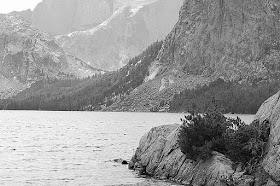Part of a series on Aldo Leopold’s “Land Ethic”
Somebody somewhere at this moment is writing a reverential essay about Aldo Leopold’s Land Ethic.
I feel a little ungenerous, I admit, to write in less than enthusiastic
tones. It seems to me though that if the land ethic, Leopold’s
extension of the ethical sequence to encompass the land community
(including other creatures) and thereby forming the basis for new
conservation values, was going to work out we’d have stronger hints of
this already. After all, this classic essay in conservation ethics was
published in 1949 and has been the subject of lively interest in the
intervening year. I am familiar with a lot of the literature
surrounding the essay; certainly I know where to find those pieces I
have overlooked in the past. Its influence on the history of
conservation biology cannot be overstated. To illustrate, in A Companion to Environmental Philosophy
(I choose this because it’s here beside me on the desk), the index
records entries for “Land Ethic: biotic community” extending over 7
lines, with 18 separate entries (some of which bracket several pages of
the text). I am interested, however, in reading the essay afresh; a
reading unencumbered by the scholarly paraphernalia available for this
work. I know therefore that the mild critique I offer here and in
future posts have probably been fended off; ably deflected by the
academic phalanx the surrounds Leopold’s work, nevertheless, in the
spirit of inquiring if the land ethic can be rejuvenated I pose some
challenges again. It may be that we must risk deposing this king of
ecology. In other words, I ask if the land ethic must be rescued from Leopold’s
treatment of it? It’s time to read Leopold as if he’s being read for
the first time.








